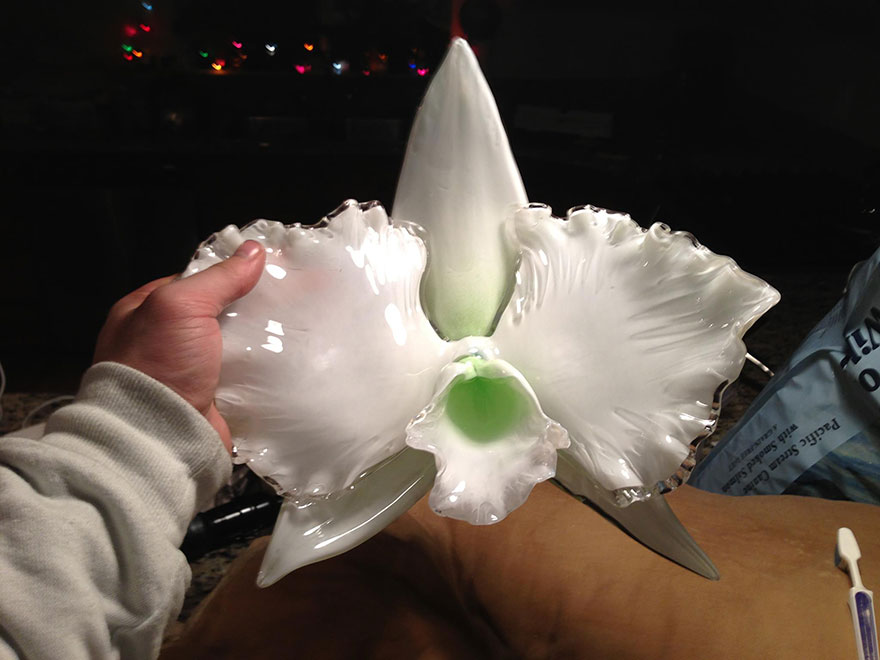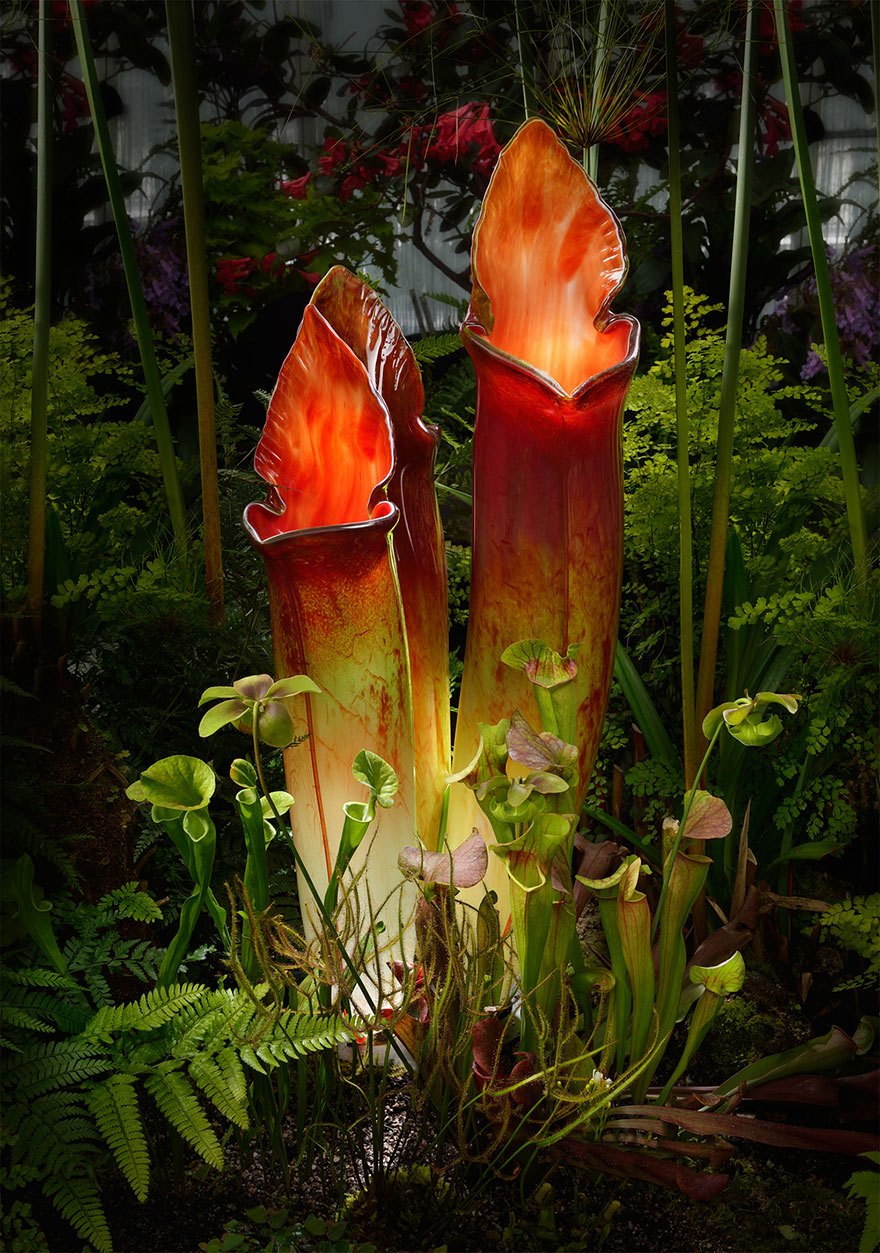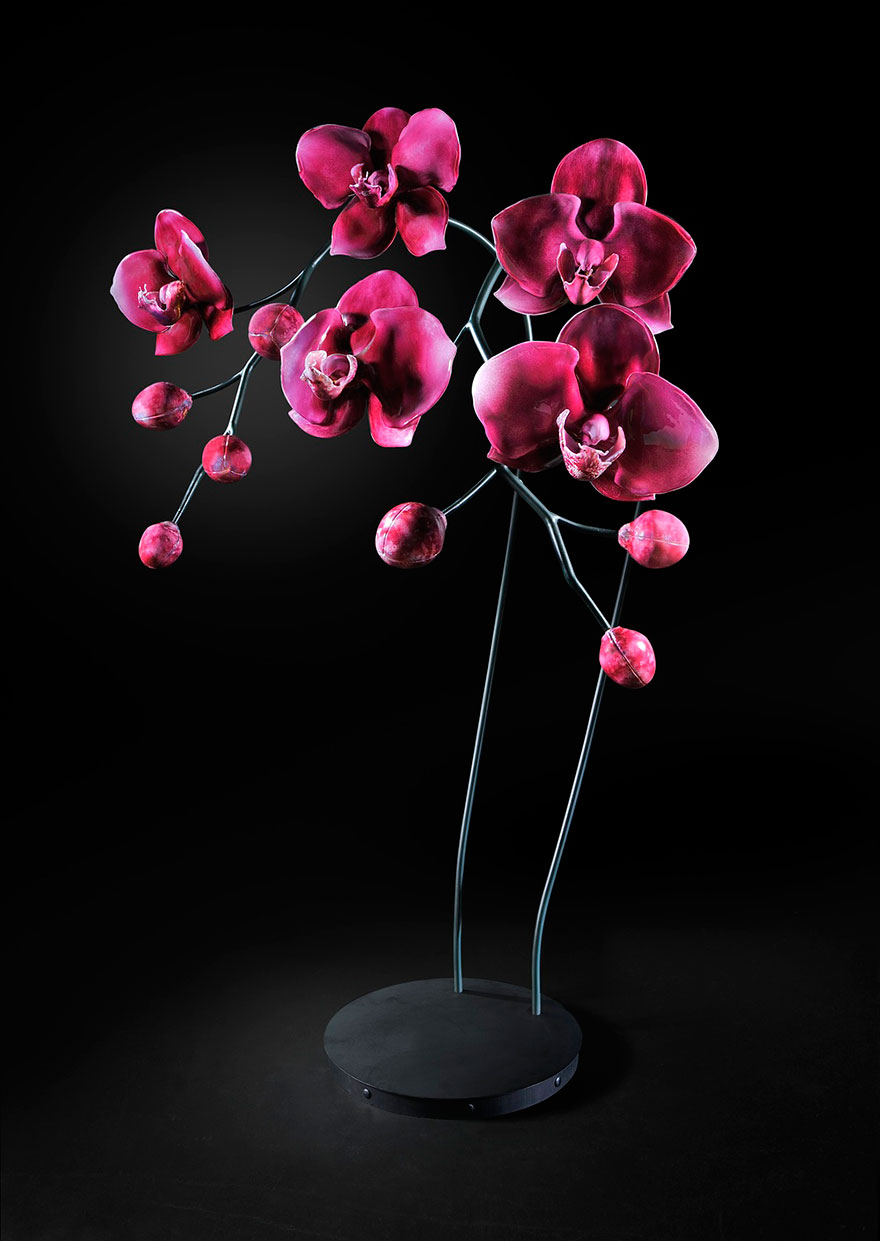Jason Gamrath, a master glassblower based in Seattle, creates enormous detailed orchids and carnivorous flowers to help people who see his art appreciate the minute details of the plant kingdom.
“The purpose of creating this series on a macro scale is to bring to light the beauty that exists within the micro scale of nature,” he explains. “Small plants, although minuscule in comparison to our human-sized way of existing, are overwhelmingly perplexing when held inches away from one’s face.”
“It is my hope that when people admire my large-scale renderings, they become curious and captivated by the hints of realism I incorporate into my designs,” the experienced glass-blower said. And indeed – his sculptures make it seem as though you could walk among these enormous flower and pick up on their wonderful scents.
To see how they blow Murano Glass in Italy, check out this amazing clip: https://www.youtube.com/watch?v=IqkNHUX6jmI And don't forget, if you're looking for a piece of original art to hang on your walls, check out artFido HERE!
















Leave a Reply
You must be logged in to post a comment.